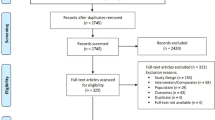Abstract
Purpose
Advanced non-fluoroscopic mapping systems for radiofrequency ablation (RFA) have shown to be an effective treatment of atrial fibrillation. This study analyzes the resource usage and subsequent costs associated with the implementation of an ultra-high density mapping system (UHDMS) compared to non-ultra-high density mapping systems (NUHDMS).
Methods
This retrospective observational study included 120 patients (18 years or older) with paroxysmal or persistent atrial fibrillation who underwent RFA for de novo pulmonary vein isolation guided either by an UHDMS (n=63) or NUHDMS (n=57) for their index procedure. We compared patient characteristics, short- and long-term procedural outcomes, resource usage, and clinical outcomes followed up to 16 months between the two treatment groups. The cost analysis was conducted from the perspective of a single center in Spain (Clinica Universidad de Navarra).
Results
Neither baseline patient characteristics nor complication rate differed between groups. Repeat RFAs following recurrent arrhythmia at 16 months was lower in the UHDMS patient group than in the NUHDMS group (6 vs. 14, respectively; P=0.027). The average total cost per patient was €1,600 lower in the UHDMS group, compared to the NUHDMS group (€11,061 and €12,661, respectively; P=0.03).
Conclusion
In patients treated with an NUHDMS, 25% had a repeat ablation for recurrent arrhythmia, whereas only 9% of patients treated with a UHDMS had one (61% relative risk reduction), resulting in an average cost saving per patient of €1,600.



Similar content being viewed by others
Availability of data and material
Not applicable.
Code availability
Not applicable.
References
Chugh SS, Havmoeller R, Narayanan K, Singh D, Rienstra M, Benjamin EJ, et al. Worldwide epidemiology of atrial fibrillation: a Global Burden of Disease 2010 Study. Circulation. 2014;129(8):837–47.
Benjamin EJ, Levy D, Vaziri SM, D'Agostino RB, Belanger AJ, Wolf PA. Independent risk factors for atrial fibrillation in a population based cohort: the Framingham Heart Study. JAMA. 1994;271(11):840–4.
Pérez-Villacastín J, Pérez N, Moreno J. Epidemiology of atrial fibrillation in Spain in the past 20 years. Rev Esp Cardiol (Engl Ed). 2013;66(7):561–5.
Gomez-Doblas J, Muniz J, Alonso J, et al. Prevalence of atrial fibrillation in Spain. OFRECE study results. Rev Esp Cardiol. 2014;67(4):259–69.
Heeringa J, van der Kuip D, Hofman A, et al. Prevalence, incidence and lifetime risk of atrial fibrillation: the Rotterdam study. Eur Heart J. 2006;27(8):949–53.
Ball J, Carrington M, McMurray J, Stewart S. Atrial fibrillation: profile and burden of an evolving epidemic in the 21st Century. Int J Cardiol. 2013;167:1807–24.
Calkins H, Hindricks G, Cappato R, Kim YH, Saad EB, Aguinaga L, et al. 2017/HRS/EHRA/ECAS/APHRS/SOLAECE expert consensus statement on catheter and surgical ablation of atrial fibrillation. Europace. 2018;20:e1–e160.
Nedios S, Sommer P, Bollmann A, Hindricks G. Advanced mapping systems to guide atrial fibrillation ablation: electrical information that matters. JAFIB. 2018;8(6):96–102.
Marini M, Ravanelli D, Martin M, et al. An economic analysis of the systematic use of mapping systems during catheter ablation procedures: single center experience. Biomed Res Int. 2019;2019:2427015.
Kudaiberdieva G, Gorenek B. Cost-effectiveness of atrial fibrillation ablation. J Atr Fibrillation. 2013;6(1):880.
Ballesteros G, Ramos P, Neglia R, Menéndez D, García-Bolao I. Atrial fibrillation ablation guided by a novel nonfluoroscopic navigation system. Rev Esp Cardiol. 2017;70(9):706–12.
García-Bolao I, Ballesteros G, Ramos P, et al. Identification of pulmonary vein reconnection gaps with high-density mapping in redo atrial fibrillation ablation procedures. Europace. 2018;20(FI_3):f351–8.
Al-Hijji MA, Deshmukh AJ, Yao X, et al. Trends and predictors of repeat catheter ablation for atrial fibrillation. Am Heart J. 2016;171(1):48–55.
Funding
This work was supported by funding from Boston Scientific.
Author information
Authors and Affiliations
Corresponding author
Ethics declarations
Ethics approval
The retrospective study protocol was approved by the center’s ethics committee of Clinica Universidad de Navarra, Pamplona, and the regional ethics committee.
Consent to participate
Not applicable.
Consent for publication
Not applicable.
Conflict of interest
Ane Erkiaga Aio and Alfonso de Lossada Juste are employed by Boston Scientific. Armin Klesius was employed by Boston Scientific at the moment of the study and declare currently having no conflict of interest. Eliana Biundo, Edith Maes, and Audrey Cordon are employed by Deloitte that received an unconditional grant to conduct the research that informed this manuscript. Bernardo Wise, Ramón Albarrán-Rincón, Pablo Ramos, and Ignacio García-Bolao declare they have no financial interests.
Additional information
Publisher’s note
Springer Nature remains neutral with regard to jurisdictional claims in published maps and institutional affiliations.
Rights and permissions
About this article
Cite this article
Wise, B., Albarrán-Rincón, R., De Lossada Juste, A. et al. Economic evaluation of an ultra-high density mapping system compared to non-ultra-high density mapping systems for radiofrequency catheter ablation procedures in patients with atrial fibrillation. J Interv Card Electrophysiol 63, 103–108 (2022). https://doi.org/10.1007/s10840-021-00951-x
Received:
Accepted:
Published:
Issue Date:
DOI: https://doi.org/10.1007/s10840-021-00951-x




